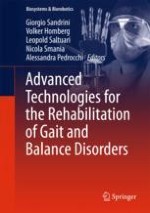The book provides readers with a comprehensive overview of the state of the art in the field of gait and balance rehabilitation. It describes technologies and devices together with the requirements and factors to be considered during their application in clinical settings. The book covers physiological and pathophysiological basis of locomotion and posture control, describes integrated approaches for the treatment of neurological diseases and spinal cord injury, as well as important principles for designing appropriate clinical studies. It presents computer and robotic technologies currently used in rehabilitation, such as exoskeleton devices, functional electrical stimulation, virtual reality and many more, highlighting the main advantages and challenges both from the clinical and engineering perspective. Written in an easy-to-understand style, the book is intended for people with different background and expertise, including medical and engineering students, clinicians and physiotherapists, as well as technical developers of rehabilitation systems and their corresponding human-compute interfaces. It aims at fostering an increased awareness of available technologies for balance and gait rehabilitation, as well as a better communication and collaboration between their users and developers.
